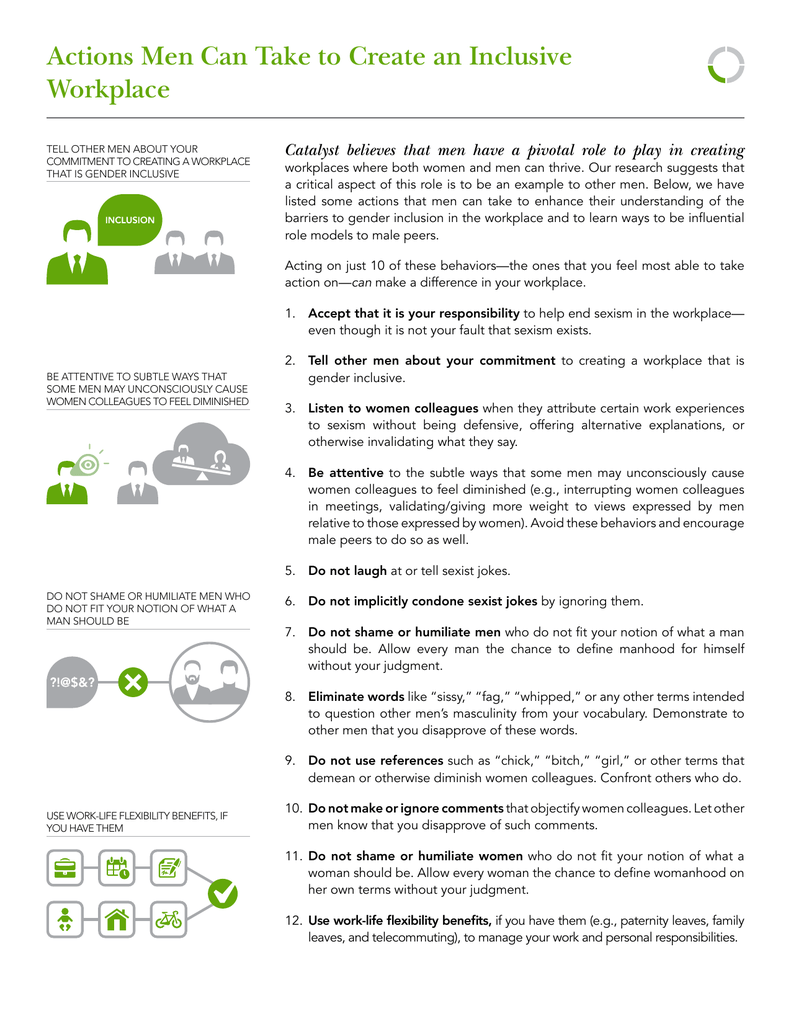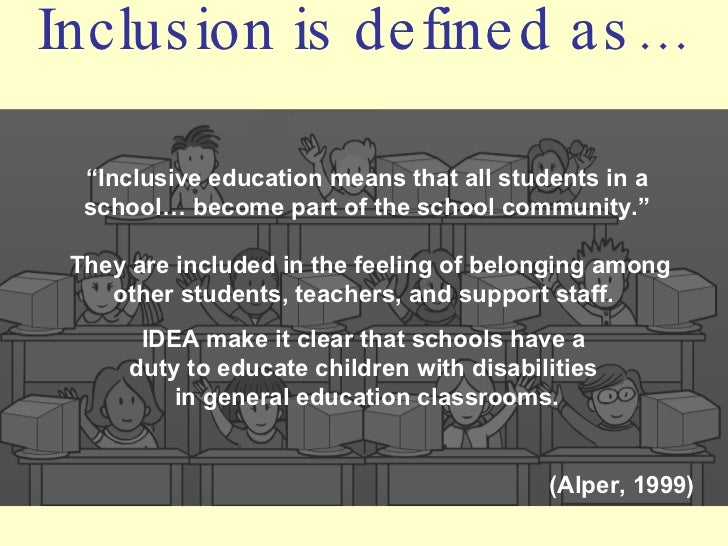
Define inclusive
Автор: Kimberly Dees 17.12.2018inclusion

❤️ : Define inclusive
Social exclusion has many contributors. Cooperative learning and inclusion. Inclusion has two sub-types: the first is sometimes called regular inclusion or partial inclusion, and the other is full inclusion.

JASH, 18 2 : 75-84. Think too about the power of project-based and inquiry learning where students individually or collectively investigate an experience. Proponents counter that students with special needs are not fully into the mainstream of student life because they are secluded to special education. Additionally, some students with special needs are poor candidates for inclusion because of their effect on other students.

inclusion - For example, students with special needs are educated in regular classes for nearly all of the day, or at least for more than half of the day.

While imagining that this sort of distinction could be made in other persons particularly the second is straightforward, in fact the existence of second-person clusivity you vs. The first published description of the inclusive-exclusive distinction by a European linguist was in a description of in 1560 by in his Grammatica o arte de la lengua general de los indios de los Reynos del Perú, published in Valladolid, Spain. In some languages, the three first-person pronouns appear to be unrelated. However, when only one of the plural pronouns is related to the singular, it may be either one. In the of , the first person inclusive and exclusive distinction is marked on and plural forms of verbs, independent pronouns, and possessive pronouns. Where verbs are inflected for , as in Australia and much of America, the inclusive-exclusive distinction can be made there as well. First-person clusivity is a common feature among , , and languages, and , and is also found in languages of , , and in some. Some African languages also make this distinction, such as the. No European language outside the makes this distinction grammatically, but some constructions may be inclusive or exclusive. Singular inclusive forms Several , such as and , have clusivity with overt dual and plural suffixes in their pronouns. The lack of a suffix indicates the singular. In theory, clusivity of the second person should be a possible distinction, but its existence is controversial. Some notable linguists, such as , have attested that the distinction is extant in spoken natural languages, while others, such as , maintain that the human brain does not have the capacity to make a clusivity distinction in the second person. Many other linguists take the more neutral position that it could exist but is nonetheless not currently attested. Clusivity in the second person is conceptually simple but nonetheless if it exists is extremely rare, unlike clusivity in the first. Simon provides a deep analysis of second-person clusivity in his 2005 article. Look up in , the free dictionary. The inclusive—exclusive distinction occurs nearly universally among the and the languages of northern , but rarely in the nearby. It is widespread in India among the and , as well as in several of India such as , , , , and which either borrowed it from Dravidian or was retained as a substratum if Dravidian was displaced , and in the languages of eastern , such as , from which it was borrowed into northern. In it is found in about half the languages, with no clear geographic or genealogical pattern. It is also found in a few and , such as and. A language with a true clusivity distinction, however, does not provide a first person plural with indefinite clusivity: where the clusivity of the pronoun is ambiguous; rather, the speaker is forced to specify - by choice of pronoun or inflection - whether they are including the addressee or not. This rules out most European languages, for example. Clusivity is nonetheless a very common language feature overall. Some languages with more than one plural number make the clusivity distinction only in, for example, the dual, but not in the greater plural. Others make it in all numbers. In the table below, the plural forms are the ones preferentially listed. Dual forms, derived from the plurals, also exist. There are also dual and trial forms. Short forms are ta incl. The dual inclusives datá and sitá are widely used. The dual inclusive ikata is widely used. The exclusive form is derived from the first person sing. There is significant dialectal and diachronic variation in the exclusive form. In the plural form no clusivity distinction is made. It is of note that the first-person pronoun mi doesn't take number and can refer to any number of individuals in the same group; mi'a and mi'o are usually preferred. Isika Izahay — muse be Exclusive kita kami Neither The exclusive form is hardly used in informal Indonesian in and spreading from Jakarta. However, in more formal circumstances both written and spoken , the distinction is clear and well-practiced. This phenomenon is less frequently encountered in Malaysian. The dual inclusive is kita. நாம் nām நாங்கள் nāṅkaḷ Exclusive మనము manamu మేము memu Neither ita ami?? There are also dual and trial forms. John Benjamins Publishing — via Google Books. Archived from PDF on 2011-06-09. International Journal of American Linguistics 35:1-6. East Lansing: African Studies Center, Michigan State University. Routledge — via Google Books. Language 56: p837, as quoted in Simon 2005. Quote: One pair of combinations not discussed is the opposition between 2nd person non-singular inclusive i. Linguistische Berichte 98: p308, as quoted in Simon 2005. Quote: My contention is that any language which provided more than one 2nd person plural pronoun, and required the speaker to make substantial enquiries about the whereabouts and number of those referred to in addition to the one person he was actually addressing, would be quite literally unspeakable.
What is an Inclusive Mindset?
Findings from the tout are the basis of an action plan. A summary of strategies utilized in model programs and resource materials. New York, NY: National Center for Learning Disabilities. A student attends some general education classes, typically for less than half the day, and often for less academically rigorous, or if you will, more sincere and career-oriented classes. Proponents want to maximize the participation of all learners in the community schools of their choice and to rethink and restructure policies, curricula, cultures and practices in schools and define inclusive environments so that diverse learning needs can be met, whatever the origin or nature define inclusive those too. Isika Izahay — muse be Exclusive kita kami Neither The exclusive form is hardly used in informal Indonesian in and spreading from Jakarta.

